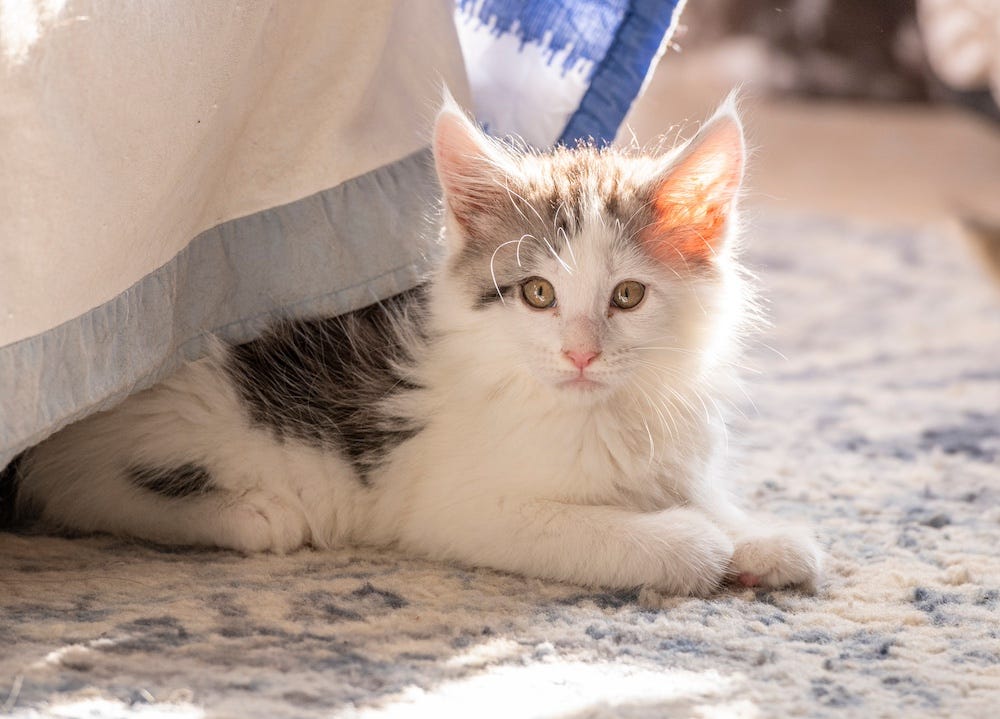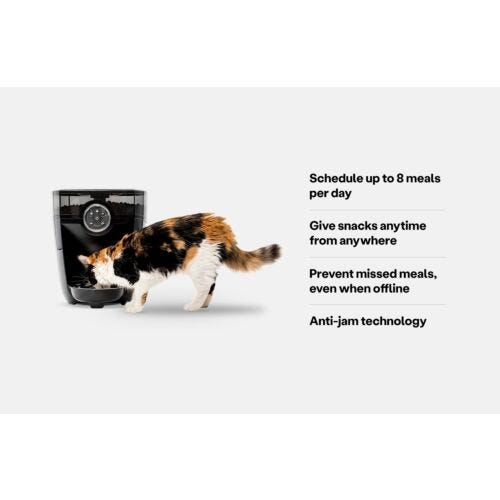Spaying your cat is a responsible course of action that not only improves her wellbeing, but also helps curb feline overpopulation. Let’s take a look at the reasons why a neutered or spayed cat will live a longer—and likely happier—life.
What is spaying a cat?
Spaying a cat is to surgically remove a female’s ovaries and uterus. Neutering a cat is to surgically remove a male’s testes. Both surgeries result in sterilization.
7 reasons why a spayed cat will live longer
1. Spaying and neutering reduces or eliminates the risk of developing many cancers.
Spaying your female cat reduces her risk of developing breast and mammary cancer; even better, it eliminates her risk of developing ovarian and uterine cancer (because the ovaries and uterus are removed). Likewise, neutering your male cat will eliminate his risk of developing testicular cancer.
2. Spaying reduces or eliminates the risk of developing malignant tumors.
If you spay a female cat before her first heat cycle, the rate of her developing breast tumors—which are almost always malignant—drops to nearly zero. Furthermore, tumors of the mammary and reproductive system are greatly reduced.
3. A spayed cat cannot contract life-threatening infections like pyometra.
Pyometra is a severe uterine infection caused by bacteria in the uterus, which eventually fills with pus; if undetected, it is almost always fatal. Other life-threatening uterine infections can also occur after a cat gives birth, such as acute metritis.
The key to treating these infections is early detection, but the best scenario is prevention by spaying.
4. Regularly undergoing heat cycles—on top of birthing litters—puts a tremendous amount of stress on a female cat’s body.
Regular heat cycles make female cats more prone to other illnesses, including respiratory disease, parasite infestation, and bacterial infection. This is in addition to the stress and malnutrition a mother cat experiences. (A fertile cat can produce three litters per year on average, and the average number of kittens in a feline litter is four to six.)
5. Eliminating the drive to mate reduces the risk of contracting deadly diseases.
This is because neutered male cats are noticeably less aggressive. The combination of testosterone coursing through unneutered males and nearby females being in heat results in a lot of cat fights. Deadly diseases such as FeLV (feline leukemia) and feline distemper (feline panleukopenia virus) are most likely contracted after being bitten or scratched during said fights.
6. Neutered or spayed cats are much less likely to roam dangerously.
Once an unspayed female enters her heat cycle, she will do whatever it takes to find a mate. If she’s indoors, she’ll likely attempt to escape outside. A spayed cat won’t roam, distracted and hormonal, in search of a male—including straight into dangerous traffic. Lest we forget, trauma remains the leading cause of death in cats: Hundreds of thousands of felines die each year in traffic accidents.
7. Spaying and neutering often eliminate the desire to spray indoors.
Finally, neutering a cat reduces or even eliminates his urge to spray urine as a way to mark his territory. And if he does spray, the odor will be far less pungent. A spayed cat likewise will keep your house cleaner, as she won’t be entering a heat cycle that results in passing bodily fluids. Frustrated pet owners are more likely to give up a cat that is making messes around the house. The cat will likely end up in a high-intake shelter—and according to ASPCA, 860,000 shelter cats are euthanized in the U.S. every year.

FAQ
At what age should a cat be spayed or neutered?
Cats should be spayed and neutered before they reach sexual maturity—typically four to six months of age. Veterinarians are starting to advocate for spaying and neutering kittens as young as 8 weeks old. A cat can be spayed or neutered at any age, but unfortunately not all of the benefits of doing so—such as eliminating the risk of breast tumors—will transpire for an older cat.
What does it cost to spay or neuter a cat?
Spaying a female cat tends to cost a little more than neutering a male cat. The average cost of these procedures can be $500+ at private veterinary practices. However, there are many low-cost (and even some free) options out there. Visit ASPCA to search for a low-cost spay-neuter provider near you.
Do fixed cats still have the urge to mate?
Spayed female cats no longer go into heat, which eliminates the drive to mate. However, spayed cats that have already reached sexual maturity may experience residual urges for a short time after the surgery.
Neutered male cats also experience significantly reduced urges to mate, but some males may continue to be attracted to, and mate with, unspayed females.
Can cats die after being spayed or neutered?
Cats rarely pass away after being spayed. According to a 2017 study published in The Veterinary Journal, perioperative mortality in female cats in a high-volume spay-neuter clinic was 0.05%. That is a survival rate of 99.95%. Male cats fared even better, with a survival rate of 99.97%.
Sources:









